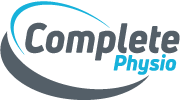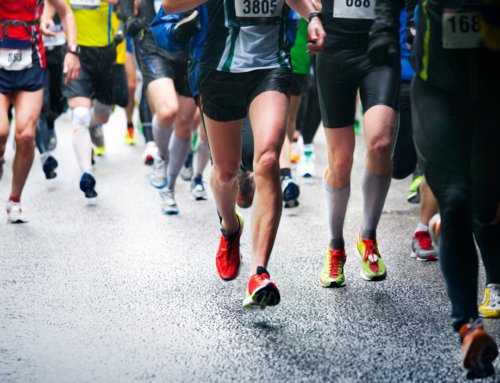It’s never too late to lace up your running shoes! However, starting to run in your 40’s or 50s (masters category) requires a careful approach to avoid running related injuries and ensure long-term success.
Here’s a guide to help you begin running in your 40s:
1. Get Medical Clearance
Before starting any running program, especially if you have pre-existing health conditions, it’s a good idea to get a medical check-up with your GP to give you a bit of an MOT and to get the green light to get going.
2. Invest in Proper Gear
Good quality, comfortable running shoes can make all the difference to your running. Having the right pair of trainers that give you the correct support can help prevent injuries and allow you to clock up the miles without getting sore feet.
It’s also important to get fitted for shoes that suit your foot type and running style and lower limb biomechanics, and remember to replace your running shoes approximately every 300-500 miles.
Additionally, invest in comfortable, moisture-wicking running clothing to keep you dry, and that actually fits you; not too tight and not too baggy. This will help prevent any unpleasant chafing!
3. Warm Up and Cool Down
Always start your run with a proper warm-up to increase blood flow to your muscles and prepare your body for exercise. By warming up you will boost your circulation, improve your joint movement and reduce injuries.
Start with brisk walking, or light running for the first couple of miles of your run, followed by some dynamic stretches such as lunges, hops and leg swings.
You are no longer going to be able to crank up your pace from the get go; try and embrace the slow start to your run and allow your heart and muscles to wake up gradually, knowing that you will reap the benefit of this in the second part of your run.
Equally important is the cool-down phase; you should cool down with a walk and stretching to improve flexibility and prevent stiffness, focusing on the hamstrings, calves and quads. Trust me, your legs will thank you later
4. Start Slow
For any runner young or old, it’s important to be cautious about increasing the time and intensity of workouts. For runners over 40 you’ll need to take it even easier than you might have when you were younger.
Any sudden jumps in your speed or distance can often lead to injury or muscle soreness that will set back your running schedule.
Begin with a combination of walking and running to build your stamina gradually; and aim to follow the 10% rule to prevent injuries – Avoid adding more than 10% in running intensity or distance each week.
5. Running Form
Maintaining good running form is important regardless of age, and will help with running efficiency.
A few basic tips include:
- Keep your head up, your shoulders relaxed, and your arms swinging gently at your sides.
- Try to focus on landing softly on the mid foot rather than your heel, and ensure your elbows are bent and your arms are swinging at your sides.
- Avoid overstriding as this can put extra stress on your joints; steps should be light and quick, which will help reduce joint impact and improve your speed.
6. Set Realistic Goals – Build up over months, not weeks!
Setting achievable goals helps to maintain your motivation, but older runners need more time to build fitness and strength than younger athletes. A level of running that might have taken 6-8 weeks in your 20’s or 30’s, will more likely take you 4-6 months in your 40s.
That doesn’t mean that you can’t think big! Just start with short term goals like running for 15 minutes without stopping, then gradually work towards a medium term goal such as completing a 5K-10k race, and then set your sights on that big 50 mile race as a longer term goal!
7. Mental Preparation and Motivation
Mental strength and discipline is just as important (if not more so) than physical ability in running. By setting achievable goals and making sure you celebrate your successes you will hugely enhance your motivation and overall enjoyment of running.
Joining a running group or getting a running buddy can also provide great encouragement and support to keep you motivated.
Also, don’t beat yourself up if your training schedule slips, just get back out there when you feel ready, and remember, every run, no matter how small, is a step in the right direction!
Master’s Running Programme
Here’s a suggested training schedule for beginners:
Week 1-4:
- Day 1: Walk for 10 minutes, run for 2 minute, walk for 10 minutes.
- Day 2: Rest or light cross-train/stretches/strength training.
- Day 3: Walk for 10 minutes, run for 3 minutes, walk for 10 minutes.
- Day 4: Rest or light cross-train/stretches/strength training.
- Day 5: Walk for 10 minutes, run for 4 minutes, walk for 10 minutes.
- Day 6: Strength and balance training.
- Day 7: Rest.
In weeks two, three, four, gradually increase your running so that you are walking for 8-10 mins (warm up) and then aiming to run for approx 8-10 mins before doing a 5-10 minute walk to cool down.
Week 6-10:
- Day 1: Walk for 5-10 minutes, run for 12 minutes, walk for 5 minutes.
- Day 2: Rest or light cross-train/stretches/strength training.
- Day 3: Walk for 5-10 minutes, run for 14 minutes, walk for 5 minutes.
- Day 4: Rest or light cross-train/stretches/strength training.
- Day 5: Walk for 5 minutes, run for 18 minutes, walk for 5 minutes.
- Day 6: Strength and balance training.
- Day 7: Complete Rest.
Gradually increase the running time while decreasing walking intervals as you build endurance. By the end of week 10 you can aim towards walking for 5 mins, running for 20-25 mins and then walking for 5 mins.
If this takes longer than 10 weeks then that is absolutely fine. This is just a guide and you should listen to how your body is responding to this new activity.
You can also take a look at our couch to 5k running programme, which is a great place to start.
Balancing Running, Rest, and Cross-Training
Based on current research, here are some practical guidelines for balancing running frequency, rest days, and cross-training:
-
Running Frequency:
- Beginners: 3-4 days per week of running.
- Intermediate/Advanced: 4-5 days per week of running.
Only 1-2 of these running sessions should be at high intensity training levels.
-
Rest Days:
- Include at least one full rest day per week to allow for physical and mental recovery.
- Consider additional rest days during periods of high intensity or volume training.
-
Cross-Training:
- Incorporate 1-2 days of cross-training per week, choosing activities that complement running, such as cycling, swimming, rowing pilates or yoga.
- Include strength training twice a week to improve muscle strength and endurance.
Strength Training Programme for Masters Runners
Strength training is possibly the most important factor for masters runners. It will help to maintain muscle mass, improve stability, and reduce injury risk.
Below is a programme of five exercises tailored for this age group. Ideally you should perform this routine 2-3 times per week, focusing on good form
1. Calf Raises
- Purpose: This is one of the most important exercises to do. It improves calf strength and endurance, crucial for push-off power in running.
- Instructions:
- Stand on the edge of a step with your heels hanging off.
- Slowly raise your heels, coming onto your toes, then lower back down.
- For added challenge, perform single-leg calf raises.
- Reps: 3 sets of 12-15.
2. Single-Leg Deadlift
- Purpose: Strengthens the hamstrings, glutes, and core while improving balance.
- Instructions:
- Stand on one leg, holding a dumbbell in the opposite hand.
- Hinge at the hips, lowering the dumbbell toward the ground while extending the other leg back.
- Return to the starting position by engaging the glutes.
- Reps: 3 sets of 8-10 per leg.
3. Step-Ups with Knee Drive
- Purpose: Builds up strength in the quadriceps, glutes, and calves; mimics the mechanism of running.
- Instructions:
- Step onto a sturdy platform or bench with one leg.
- Drive the opposite knee up toward your chest as you stand tall on the platform.
- Lower back down and repeat.
- Reps: 3 sets of 10-12 per leg.
4. Glute Bridge with March
- Purpose: This targets the glutes and core while also improving pelvic stability.
- Instructions:
- Lie on your back with knees bent and feet flat on the ground.
- Lift your hips to form a straight line from shoulders to knees.
- Alternate lifting one foot off the ground, maintaining hip stability.
- Reps: 3 sets of 12-16 total marches.
5. Side Plank with Leg Lift
- Purpose: Strengthens the obliques, glutes, and hip abductors and stabilisers.
- Instructions:
- Lie on one side with your elbow under your shoulder and feet stacked.
- Lift your hips to form a straight line from head to feet.
- Raise the top leg slowly, then lower it back down without losing balance.
- Reps: 2-3 sets of 8-10 per side.
Tips for Success
- Begin with light weights or bodyweight, and progress gradually as your strength improves.
- Rest for 30-60 seconds between sets.
- Incorporate a warm-up and cooldown to improve flexibility and reduce muscle stiffness.
Balance Exercises for Masters Runners
Having a good sense of balance is important for any runner, however, as you age your balance can deteriorate making you more at risk of having a stumble or fall.
You can improve your balance by doing exercises that involve standing on one leg, or try some basic yoga balances such as tree pose, eagle pose, or one legged warrior pose.
Recovery Tips for Older Runners
For older runners recovery is incredibly important, in order to prevent injuries and maintain performance and long term running success.
Here are some evidence based tips to help you get the most out of your running:
1. Rest and Active Recovery
As previously mentioned, ensure you take adequate rest days between running sessions. Active recovery, such as light walking or stretching, can help reduce muscle soreness, promote good circulation and maintain joint mobility.
2. Hydration and Nutrition
Hydration: Stay hydrated by drinking water throughout the day and during/after your runs. Proper hydration helps to flush out toxins, maintain muscle function, and reduce the risk of muscle cramps. It’s a good idea to use hydration drinks that contain electrolytes if you are doing longer runs, especially in hot weather.
Balanced Diet: Give your body the fuel that it needs by maintaining a healthy balanced diet that’s rich in lean proteins, healthy fats, and complex carbohydrates.
- Lean Proteins: Chicken, fish, tofu, and legumes to support muscle repair and growth.
- Healthy Fats: Avocado, nuts, seeds, and olive oil for energy and joint health.
- Complex Carbohydrates: Whole grains, fruits, and vegetables for sustained energy.
Anti-Inflammatory Foods: There is some good research that suggests including anti-inflammatory foods in your diet will support joint health and reduce inflammation within your body.
-
- Fruits: Strawberries, blueberries, cherries, oranges, tomatoes
- Fish: Fatty fish like salmon, mackerel, tuna, and sardines.
- Nuts and Seeds: Such as almonds and walnuts.
- Leafy Greens: Such as spinach and kale
- Olive Oil
3. Sleep
Prioritise good quality sleep, as it is essential for muscle repair and recovery. Aim for 7-9 hours of sleep per night to ensure your body has enough time to recover. Sleep quality has been found to have a direct effect on the body’s ability to recover efficiently. ‘Journal of Sleep Research.’
4. Massage and Stretching
You may notice that your legs, hips, shoulders and back all feel stiffer than when you were in your 20’s and 30’s. This may be more noticeable in the mornings, or the day after you’ve done a harder running session.
For runners in their 50s, incorporating massage, stretching, and foam rolling into your recovery routine significantly helps to alleviate the strains of running, and can allow you to maintain or even improve your flexibility.
- Massage therapy helps to increase blood flow, reduce muscle tension, and break down scar tissue, promoting quicker recovery and reducing the risk of injury.
- Stretching maintains and can improve flexibility, which is essential for maintaining a full range of motion in the joints and preventing muscle and joint stiffness.
- Foam roller work, (or self-myofascial release), targets tight areas within the muscles and fascia, helping to release knots and improve tissue quality.
Conclusion: Starting Your Masters Running Journey
Embarking on a running journey in your 40s and 50s is an empowering step toward better health, but success lies in embracing a slow and steady approach.
Building up gradually allows your body to adapt, minimising the risk of injury and ensuring long-term enjoyment of the sport. Patience, consistency, and listening to your body are key to establishing a sustainable routine.
Seeking expert advice from Complete Physio specialists can greatly enhance this journey. Their expertise in biomechanics, injury prevention, and tailored strength and recovery plans ensures you start off on the right foot and stay running strong for years to come. Remember, it’s not about how fast you go but about making the journey rewarding, safe, and fun.
You can also check out our How to Keep Running Into Your 40s & 50s blog for more advice on how to ensure continued success as a masters runner.
CALL TO ACTION
Don’t let pain hold you back, book now!







